
"In June 2005, the House of Representatives unanimously adopted H. Con. Res. 71, sponsored by Congresswoman Barbara Lee, recognizing the significance of Caribbean people and their descendants in the history and culture of the United States. On February 14, 2006, the resolution similarly passed the Senate, culminating a two-year, bipartisan and bicameral effort. The Proclamation was issued by President George W. Bush on June 6, 2006. Since the declaration, the White House has issued an annual proclamation recognizing June as Caribbean-American Heritage Month."
"The Caribbean Islands is a massive archipelago located in the Caribbean Sea, that can be subdivided into a few different regions: the Lucayan Archipelago, the Greater Antilles, the Lesser Antilles and the ABC Islands. There are 13 sovereign states and 17 dependent territories in the Caribbean, and the predominant languages are English, Spanish, French, Dutch and Antillean Creole. The Caribbean sprawls across more than 1.06 million square miles and is primarily located between North America and South America. A few of the Latin and South American countries are sometimes included with the Caribbean, most often Guyana, since it used to be a Dutch and then British colony."
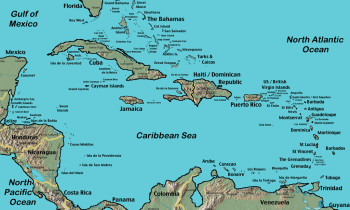
The Lucayan or Bahama Archipelago is close to the United States and consists of the Bahama Islands and Turks and Caicos. The Greater Antilles is the most visited region in the Caribbean and includes the Cayman Islands, Cuba, Dominican Republic, Haiti, Jamaica, and Puerto Rico. The majority of the Lesser Antilles separates the Caribbean Sea from the Atlantic Ocean and is grouped into the Leeward, Windward, and ABC Islands. The Leeward Islands are the northern half of the Lesser Antilles chain and include Anguilla, Antigua and Barbuda, the British and US Virgin Islands, Guadeloupe, Montserrat, Saba, St. Barthélemy (St. Barts), St Eustatius, St. Kitts and Nevis, St. Maarten, and St. Martin. The Windward Islands are the southern set of islands in the Lesser Antilles and include Barbados, Dominica, Grenada, Martinique, St. Lucia, St. Vincent and the Grenadines, and Trinidad and Tobago. The ABC Islands are the western islands of the Lesser Antilles and include Aruba, Bonaire, and Curaçao. (Caribbean map from Wikimedia)
Check out these books to learn more about Caribbean-Americans.
- Caribbean Islands
-
Image

The New Rum: A Modern Guide to the Spirit of the Americas by Bryce T. Bauer
Taste the Islands: Culinary Adventures in a Caribbean Kitchen by Hugh Sinclair
- Barbados
-
Image

Adult Nonfiction: Shirley Chisholm: Champion of Black Feminist Power Politics by Anastasia Carol Curwood
"Shaking up New York and national politics by becoming the first African American congresswoman and, later, the first Black major-party presidential candidate, Shirley Chisholm left an indelible mark as an "unbought and unbossed" firebrand and a leader in politics for meaningful change. Chisholm spent her formative years moving between Barbados and Brooklyn, and the development of her political orientation did not follow the standard narratives of the civil rights or feminist establishments. Rather, Chisholm arrived at her Black feminism on her own path, making signature contributions to U.S. politics as an inventor and practitioner of Black feminist power—the vantage point centering Black girls and women in the movement that sought to transform political power into a broadly democratic force.
Anastasia C. Curwood interweaves Chisholm's public image, political commitments, and private experiences to create a definitive account of a consequential life. In so doing, Curwood suggests new truths for understanding the social movements of Chisholm's time and the opportunities she forged for herself through multicultural, multigenerational, and cross-gender coalition building." (Amazon)
- Cuba
-
Image

Adult Fiction: Mango, Mambo, and Murder by Raquel V. Reyes
When We Left Cuba by Chanel Cleeton
Adult Nonfiction: Black Ops: The Life of a CIA Shadow Warrior by Ric Prado
Teen Fiction: A Cuban Girl’s Guide to Tea and Tomorrow by Laura Taylor Namey
Chapter Books: Alicia Alonso Takes the Stage by Nancy Ohlin
Sofía Acosta Makes a Scene by Emma Otheguy
Picture Books: The Little House of Hope by Terry Catasús
My Name is Cool by Antonio Sacre
- Dominican Republic
-
Image

Adult Fiction: The Brief Wonderous Life of Oscar Wao by Junot Díaz
Neruda on the Park by Cleyvis Natera
Adult Nonfiction: High Spirits: Short Stories on Dominican Diaspora by Camille Gomera-Tavarez
Teen Fiction: The Poet X by Elizabeth Acevedo
Chapter Book: Pilar Ramirez and the Escape from Zafa by Julian Randall
Picture Book: Islandborn by Junot Díaz
- Grenada
-
Image

Adult Fiction: Against the Currant by Olivia Matthews
Hard Dough Homicide by Olivia Matthews
"Little Caribbean, Brooklyn, New York: Lyndsay Murray is opening Spice Isle Bakery with her family, and it’s everything she’s ever wanted. The West Indian bakery is her way to give back to the community she loves, stay connected to her Grenadian roots, and work side-by-side with her family. The only thing getting a rise out of Lyndsay is Claudio Fabrizi, a disgruntled fellow bakery owner who does not want any competition.
On opening day, he comes into the bakery threatening to shut them down. Fed up, Lyndsay takes him to task in front of what seems to be the whole neighborhood. So when Claudio turns up dead a day later—murdered—Lyndsay is unfortunately the prime suspect. To get the scent of suspicion off her and her bakery, she has to prove she’s innocent—under the watchful eyes of her overprotective brother, anxious parents, and meddlesome extended family. What could go wrong?" (Amazon)
- Haiti
-
Image
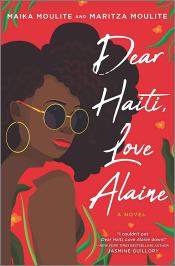
Adult Fiction: What Storm, What Thunder by Myriam J.A. Chancy
Adult Nonfiction: Love Me as I Am by Garcelle Beauvais
Teen Fiction: Behind the Mountains by Edwidge Danticat
Dear Haiti, Love Alaine by Maika Moulite
Chapter Book: The Year I Flew Away by Marie Arnold
Picture Book: Auntie Luce’s Talking Paintings by Francie Latour
- Jamaica
-
Image
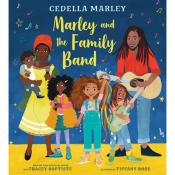
Adult Fiction: Black Cake by Charmaine Wilkerson
The Islands: Stories by Dionne Irving
Adult Nonfiction: Practically Vegan: More Than 100 Easy, Delicious Vegan Dinners on a Budget by Nisha Melvani
Teen Fiction: Love is a Revolution by Renée Watson
Picture Books: Big Tune: Rise of the Dancehall Prince by Alliah L. Agostini
Marley and the Family Band by Cedella Marley
- Martinique
-
Image
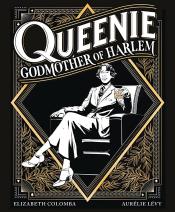
Adult Nonfiction: Queenie: Godmother of Harlem by Elizabeth Colomba
"Queenie follows the life of Stephanie Saint-Clair—the infamous criminal who made herself a legend in Harlem in the 1930s. Born on a plantation in the French colony of Martinique, Saint-Clair left the island in 1912 and headed for the United States, eager to make a new life for herself. In New York she found success, rising up through poverty and battling extreme racism to become the ruthless queen of Harlem’s mafia and a fierce defender of the Black community. A racketeer and a bootlegger, Saint-Clair dedicated her wealth and compassion to the struggling masses of Harlem, giving loans and paying debts to those around her. But with Prohibition ending, and under threat by Italian mobsters seeking to take control of her operation, she launched a merciless war to save her territory and her skin. In an America still swollen by depression and segregation, Saint-Clair understood that her image was a tool she could use to establish her power and wield as a weapon against her opponents." (Amazon)
- Puerto Rico
-
Image
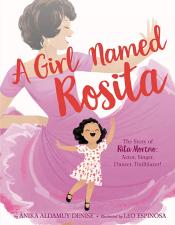
Adult Nonfiction: Diasporican: A Puerto Rican Cookbook by Illyanna Maisonet
My Beloved World by Sonia Sotomayor
Adult Fiction: The Storyteller’s Death by Ann Dávila Cardinal
Teen Fiction: The Same Blood by M. Azmitia
Teen Nonfiction: Becoming Maria: Love and Chaos in the South Bronx by Sonia Manzano
Chapter Book: Silver Meadows Summer by Emma Otheguy
Children Nonfiction: A Girl Named Rosita: The Story of Rita Moreno: Actor, Singer, Dancer, Trailblazer! By Anika Denise
Planting Stories: The Life of Librarian and Storyteller Pura Belpré by Anika Denise
- Trinidad and Tobago
-
Image
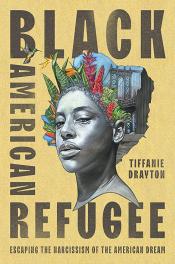
Adult Fiction: Love After Love by Ingrid Persaud
‘Til the Well Runs Dry by Lauren Francis-Sharma
Adult Nonfiction: Black American Refugee: Escaping the Narcissism of the American Dream by Tiffanie Drayton
Secrets We Kept: Three Women of Trinidad by Krystal A. Sital
Sweet Hands: Island Cooking from Trinidad & Tobago by Ramin Ganeshram
Chapter Books: The Jumbies by Tracey Baptiste (try books 2 & 3 of the series)
Children Nonfiction: Cardi B: Breaking Boundaries and Records by Terri Kaye Duncan
Picture Book: Looking for Jumbie by Tracey Baptiste
- US Virgin Islands
-
Image
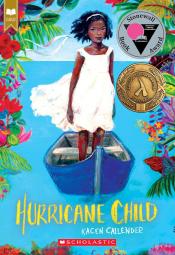
Adult Fiction: Land of Love and Drowning by Tiphanie Yanique
Adult Nonfiction: My Modern Caribbean Kitchen: 70 Fresh Takes on Island Favorites by Julius Jackson
The Not-Quite States of America: Dispatches from the Territories and Other Far-Flung Outposts of the USA by Doug Mack
Straight Shooter: A Memoir of Second Chances and First Takes by Stephen Anthony Smith
Chapter Book: Hurricane Child by Kacen Callender
Children Nonfiction: Tim Duncan: Power Forward by Percy Leed